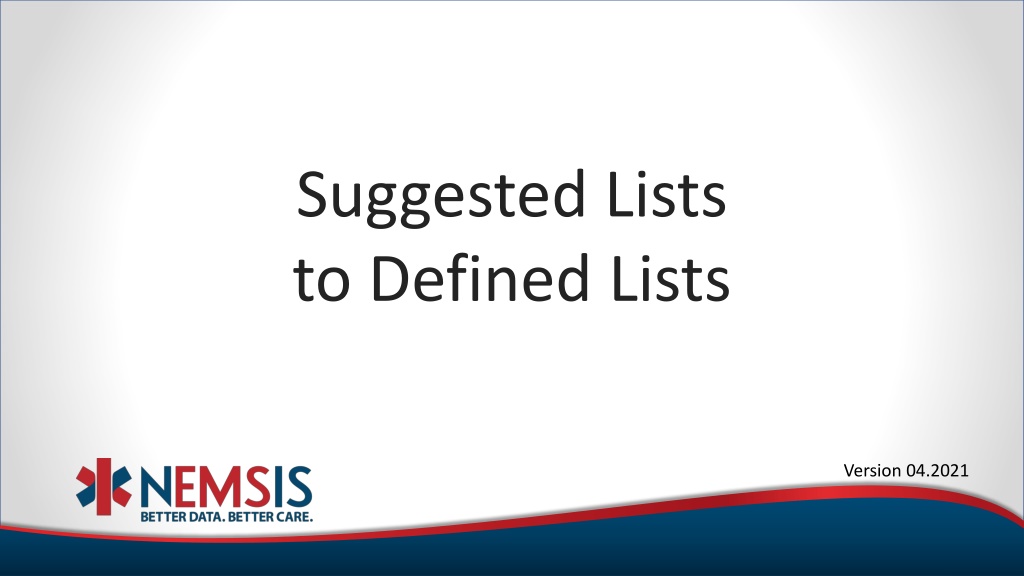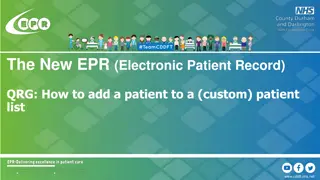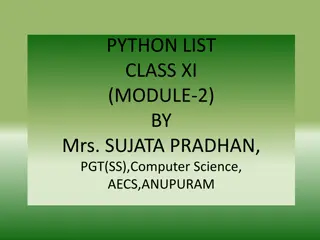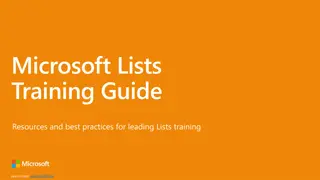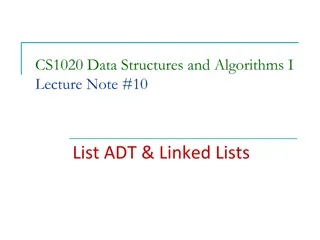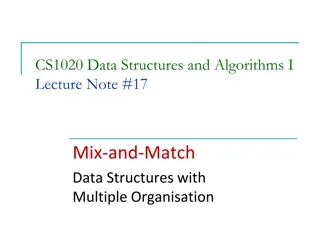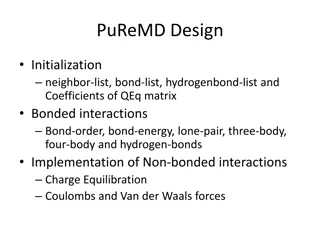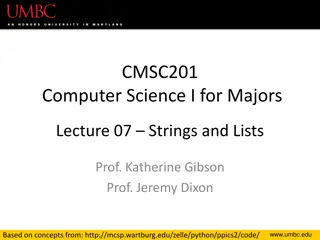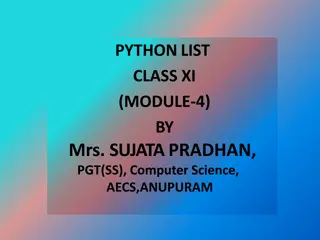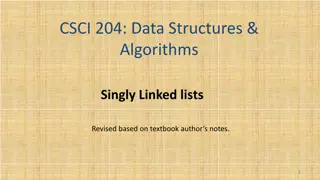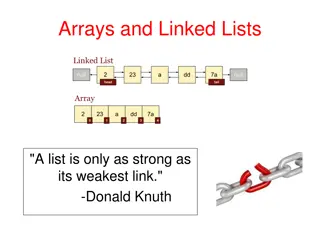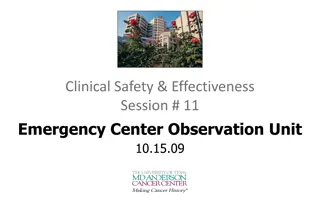Streamlining EMS Documentation: Defined Lists for Efficient Patient Care
EMS clinicians face challenges in documentation due to extensive lists of values. The transition from suggested to defined lists, initiated in 2016 and refined in 2019, aims to improve documentation accuracy by presenting commonly used values to providers during patient care instances. This process, primarily designed for 911 response scenarios, involves a collaborative effort to require the use of standardized terminology code sets. The implementation of defined lists in EMS software interfaces allows for the inclusion of values outside the defined lists through existing code patterns, thus enhancing documentation quality in the EMS field.
Download Presentation

Please find below an Image/Link to download the presentation.
The content on the website is provided AS IS for your information and personal use only. It may not be sold, licensed, or shared on other websites without obtaining consent from the author. Download presentation by click this link. If you encounter any issues during the download, it is possible that the publisher has removed the file from their server.
E N D
Presentation Transcript
Suggested Lists to Defined Lists Version 04.2021
Simplifying Documentation Simplifying Documentation EMS clinicians have long reported that quality documentation is impeded by having to scroll through extensive lists of values to represent a patient interaction.
Process of Suggested to Defined Lists Process of Suggested to Defined Lists 2016: NEMSIS TAC developed suggested lists of codes for elements utilizing standards developed by national organizations. Lists were organized in a hierarchical fashion, in two-steps (parent and child codes), promoting software developers to utilize code drill-downs for ease of use. Use of suggested lists was not mandatory and uptake was sporadic. 2019: NEMSIS TAC evaluated the codes included in the suggested lists, by comparing them to codes actually submitted in 2018 through mid-2019 (36 million records) and revised the 2016 suggested lists to reflect the most commonly used codes.
Development Development A work-group consisting of the NEMSIS TAC, State EMS Data Managers, and stakeholders participated in the Spring 2020 v3 Implementation meetings to discuss and approve a process to require the use of the 2019 Suggested Lists. Of the 22 NEMSIS v3 elements utilizing standardized terminology code sets, nine elements have no associated list but implement defined code patterns to implement lists such as ICD-10-CM, SNOMED-CT, RxNorm, and LOINC*. For the remaining 13 elements, suggested value lists become defined (i.e., Required Use ). *See https://www.nlm.nih.gov/healthit/index.html for more information on HHS Clinical Terminology Standards.
Defined Lists Defined Lists Refined the suggested list of values to those most often used. Defined lists must be presented to the provider at the time of patient care documentation. Improve the accuracy of documentation by eliminating obscure, redundant and frivolous values.
Designed Primarily for 911 Response Designed Primarily for 911 Response The Defined Lists are developed primarily to reflect a 911 EMS response. Critical Care, Air Medical and Transport Teams will need lists that are more comprehensive than a typical scene response crew would require.
Implementation Implementation These defined lists are expected to be presented to clinicians in the EMS field software s graphical interface. Values outside of defined lists are allowed through existing defined code patterns. Standard code roll-ups are provided by the NEMSIS TAC allowing all reported codes at the National and State-levels to be properly aggregated for performance assessment and research purposes.
Flexibility Flexibility Lists are designed to include greater than 90% of needed codes to document a patient encounter. Agencies can build upon these lists, if needed. They are not intended to capture the nuances of localized care from every corner of the nation. For instance, Colorado will need to reflect ski injuries while California documents more surfing injuries.
Elements with Defined Lists Elements with Defined Lists Symptoms eSituation.09 Primary Symptom eSituation.10 - Other Associated Symptoms Procedures eProcedures.03 - Procedure sConfiguration.03 - Procedures Permitted by the State dConfiguration.07 - EMS Agency Procedures Impressions eSituation.11 - Provider s Primary Impression eSituation.12 - Provider s Secondary Impressions Medications eMedications.03 - Medications Administered sConfiguration.04 - Medications Permitted by the State dConfiguration.09 - EMS Agency Medications Causes of Injury (eInjury.01) Incident Location Types (eScene.09)
Hierarchy Structure Hierarchy Structure This is a sample of the Defined List codes for Primary and Secondary Impression (eSituation.11 and .12). General classification More precise description PARENT EMS DESCRIPTION ICD-10 CODE ICD-10 DESCRIPTION Angina (pain related to heart) 120.9 Angina pectoris, unspecified Arrhythmia I49.9 Cardiac arrhythmia, unspecified Cardiovascular Cardiac arrest I46.9 Cardiac arrest, cause unspecified Chest pain, NOS R07.9 Chest pain, unspecified (not angina) Myocardial Infarction, NOS I21 Acute myocardial infarction See complete lists here: https://nemsis.org/technical-resources/version-3/version-3-resources/
Impact to Stakeholders Impact to Stakeholders EMS Clinicians Field software products should have a minimal list with a logical hierarchy to select appropriate values for documenting a patient encounter. EMS Software Vendors EMS software vendors will be required to demonstrate that their software can present the Defined Lists during v3.5.0 software compliance testing. EMS software vendors will need to demonstrate their process for an agency or state to add a value that is needed for their particular area (Custom Value). NEMSIS will NOT dictate how a software user interface will present codes, but will validate the ability of EMS software to implement Defined Lists. State/Territory Offices of EMS May require training with agencies and field clinicians. Nota required addition to the State Schematron. No requirement to modify state validity rules to incorporate Defined Lists. No impact to the new NEMSIS v3.5.0 standard.
Additional Resources for Defined Lists: https://nemsis.org/nemsis-101/ https://nemsis.org/technical-resources/version-3/version-3-resources/ Email: nemsis@hsc.Utah.edu Visit NEMSIS.org
